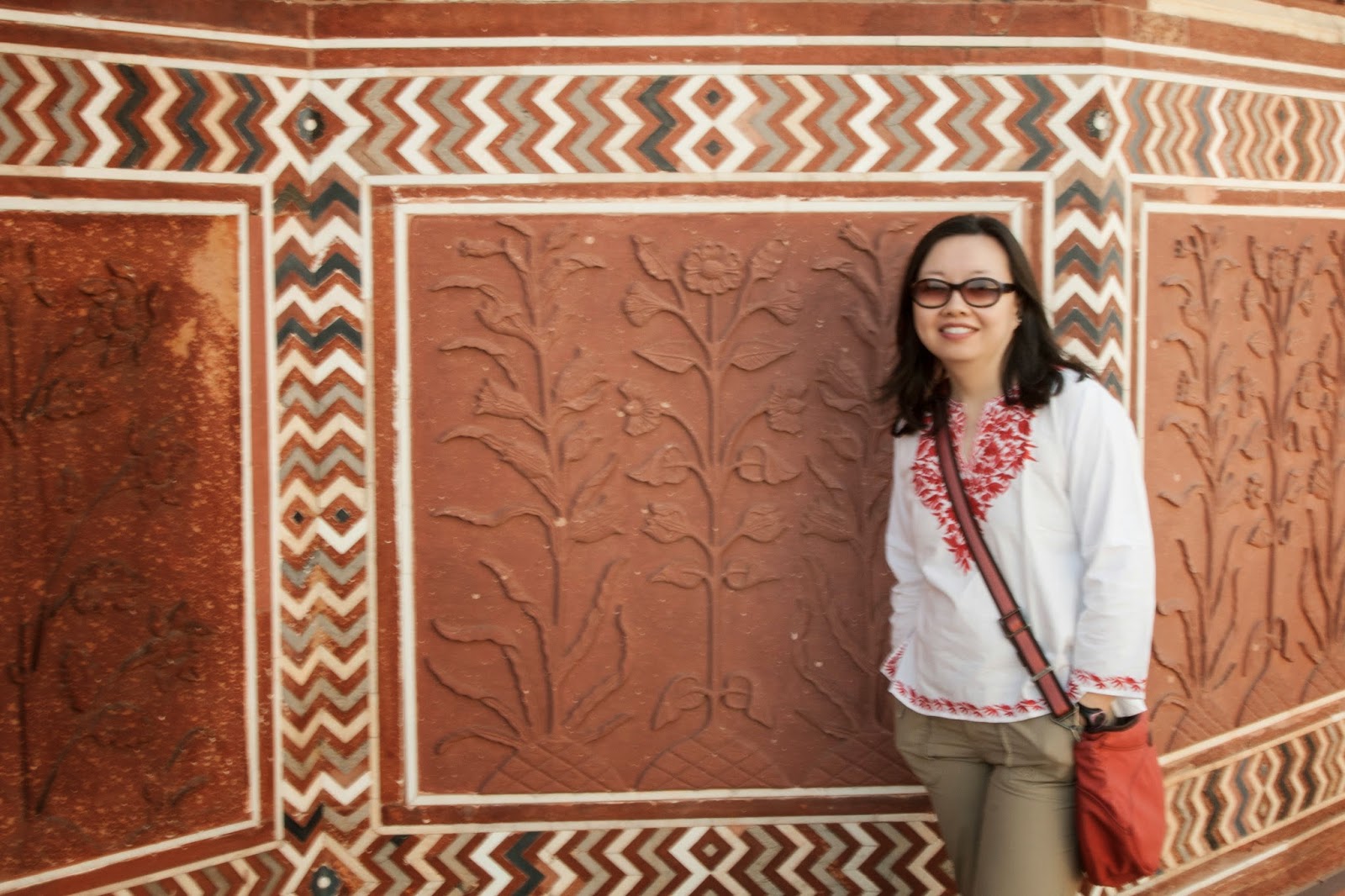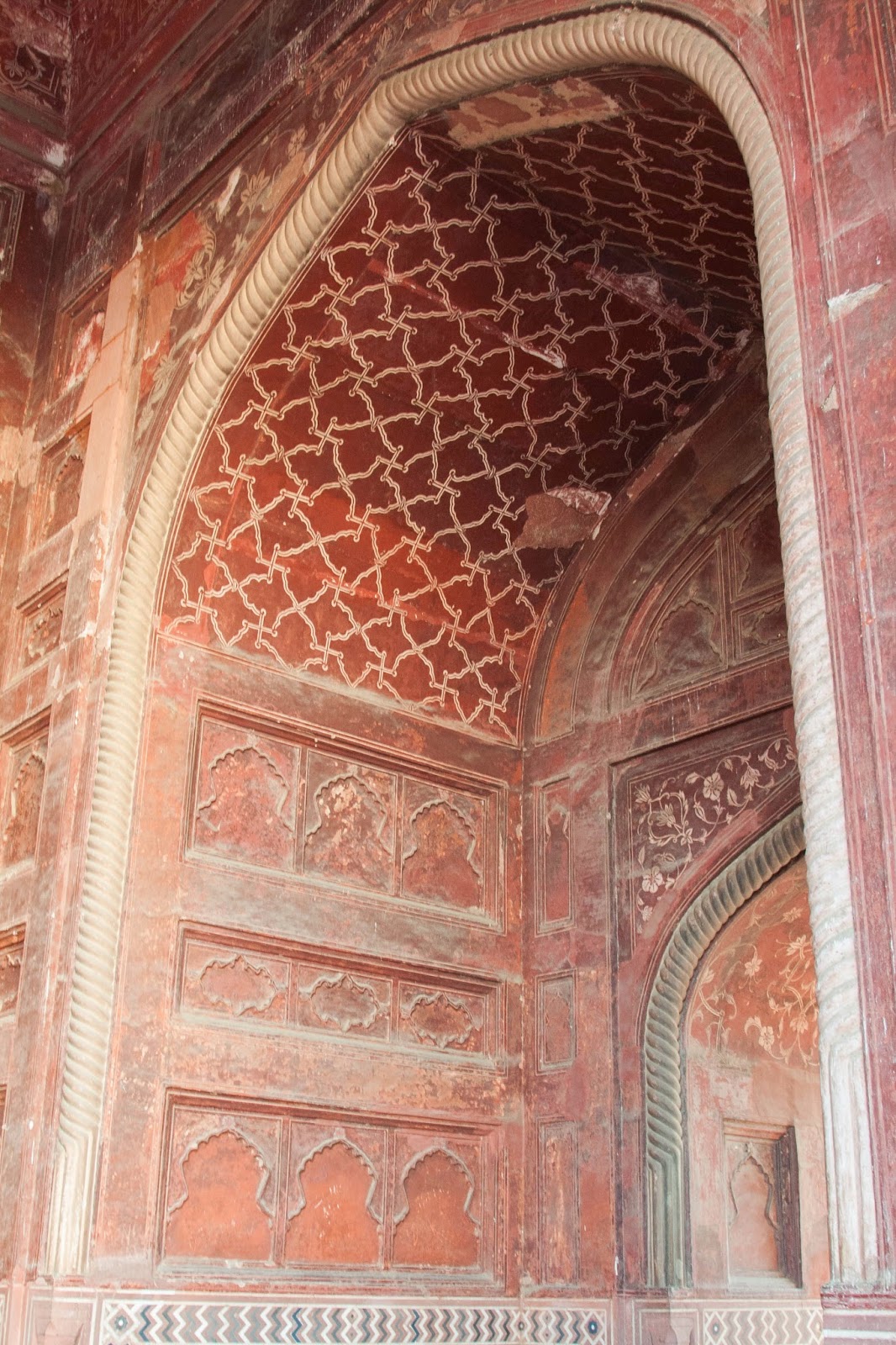After all the temples and monuments over the last few days, I was pretty skeptical that the Taj Mahal would really be as magnificent as everyone touts it to be. Boy, was I ever wrong.
+-+Agra+-+Amar+Vilas+Hotel.jpg) |
| We enjoyed some complimentary coffee and pastries while we waited for our guide to meet us. |
Once our guide Sunil arrived, we took a golf car a short distance to the grounds of the Taj Mahal.
 |
| It was still dark outside when we arrived... |
 |
| ...but many tourists were already queuing up at the entrance. |
 |
| We were finally let in as the sun was starting to rise. |
The monument was built by the Mughal emperor Shah Jahan to honor his deceased wife, Mumtaz Mahal. Before she died (while on expedition with him and his army), she bore him 14 children through 19 pregnancies!
 |
| The gateway... |
 |
| ...with an intricate door. |
Our guide told us that they built one of the flanking buildings as a mosque and then the opposite one as a guesthouse just for "symmetry." Personally, I'd be a little wary living in a house on an Indian cemetery. I guess they have never seen the movie Poltergeist.
The mosque and "guesthouse" were built with beautiful, red-colored sandstone. This softer building material allowed intricate floral designs to be carved into the walls.
 |
| However, Agra is NOT on a fault line. |
 |
The minarets actually lean outwards.
|
 |
| They will fall outward in an earthquake. |
The walls of the Taj Mahal are inlaid with semi-precious stones. However, these are not the smaller stones seen in the Agra Fort. Huge amounts were needed in the construction since the mausoleum itself is so large. The large Koran inscriptions are made of inlaid onyx. The calligraphy is actually larger at the top to give the illusion of being uniform in size when viewed from the ground.
The decorative florets are composed of inlaid gemstones (turquoise, carnelian, green jade, sapphire, agate, amethyst, etc). Sadly, many of them were removed by the British during the Raj period.
It is mandatory to wear shoe covers when entering the mausoleum. Unfortunately, tourists are no longer allowed into the actual crypt which is below the main floor. Instead, visitors can only walk around the false tomb on the ground floor. Even then, photography is not allowed inside out of respect for the dead.
Our guide told us that it had cost 32 million rupees and took over 1000 elephants and 12 years to finish the project. Neither of us was surprised, judging by the sheer magnitude of the structure and it's intricate decor. The Taj Mahal may not look all that inspiring in a simple photograph. However, it is something that really has to be experienced in person to truly understand the magnitude of its greatness.










+-+Agra+-+Taj+Mahal.jpg)
+-+Agra+-+Taj+Mahal.jpg)








No comments:
Post a Comment